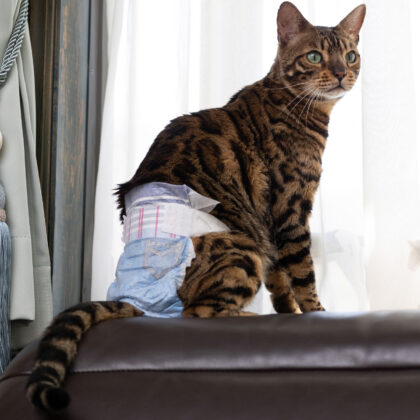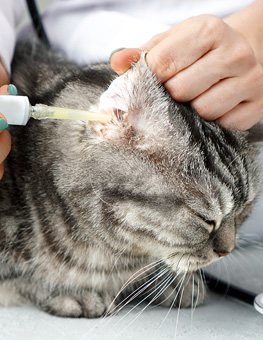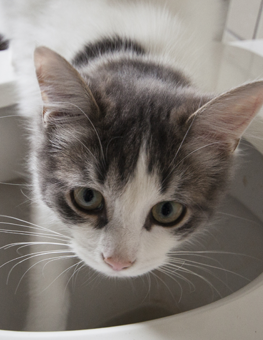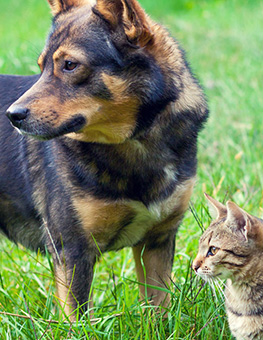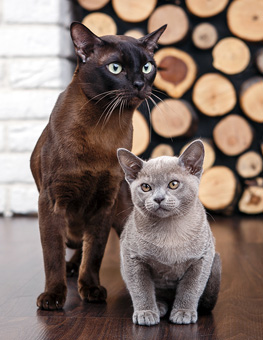Training Tip: Games to Play with your Cat
Other than sleeping and eating, play is a major part of a cat's life.
Playing with your cat strengthens your bond, helps disperse aggression, reduces fear, builds trust and confidence in shy cats and corrects inappropriate biting and scratching. By setting aside playtime, you will provide exercise for both the mind and body of your cat.
Playtime and Your Cat's Age:
Early kitten play. Kittens begin their lifetime of play at about three weeks of age. By four weeks, they can wrestle, clasp with their front paws and kick with their hind legs. This is the precursor to the game of “Rabbit.” At five weeks, they are able to perform the “stiff-legged sideways leap.” By the sixth week they are able to chase each other and play-groom themselves.
Older kitten - cat play. After a kitten reaches five months, the frequency, duration and energy of play begins to decline — unless your cat is being spurred on by a like-minded companion. If possible, it is good to have a pair of well-matched cats to keep each other fit and energetic (and entertained). In a one-cat household, it is up to the owner to provide playtime to keep the cat healthy.
Classic Cat Games:
Cats are true carnivores; their games center on hunting. Rabbit, Bird, Fish, and Mouse are the four major games that cats play, and their mothers teach them these skills as kittens. Here's a primer on the four basics types of play:
Rabbit:
In this game your kitten/cat grabs an object, wrestles it to the ground and clasps with her front paws and kicks with her hind legs. This is how a cat would attack a prey of similar size in the wild.
Bird:
Your kitten/cat will leap through the air and swat. This is done for the purpose of capturing the elusive pretend bird. Cats are able to leap five times their height from a standing position.
Fish:
Your kitten/cat will make a scooping motion that imitates hands pulling up a fish.
Mouse:
Your kitten/cat will execute a pounce. This starts with pawing, stalking, biting, and capturing the object that is playing the role of the mouse. Sometimes it will look like the cat is treading backwards then suddenly, she will spring forward on the imagined object.
Balls, paper wads, toys and small pieces of dry kibble can all take the place of your cat’s prey in these games.
It is a proven fact that carnivores are among the most intelligent and sociable of all mammals. Theory has it that playing provides a framework for developing survival skills beyond the predatory ones. Joining cats in the playful category are dogs, apes, monkeys, and dolphins.
Share any training tips you might have with our Facebook community today!






